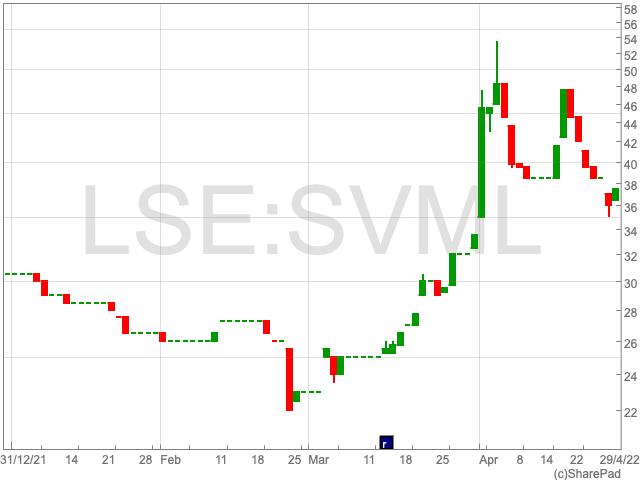Sovereign Metals announced its Q1 2022 report on Friday where the company said their recent Mineral Resource Estimate (MRE) upgrade confirmed Kasiya in Malawi is the largest rutile deposit ever discovered,
Sovereign Metals shares rose as much as 4% on Friday following the release of their Q1 update.
Kasiya is now a Tier 1 mineral project, with the world’s largest natural rutile deposit and second-largest flake graphite deposit, according to the updated MRE.
The project’s good economics was reaffirmed in the initial Scoping Study, which was based on a prior resource estimate issued in December 2021.
In the quarterly results, Sovereign reported finding 1.8bn tonnes @ 1.01% rutile and 1.32% graphite (Indicated + Inferred) equating to 18m tonnes contained rutile and 23m tonnes contained graphite.
Kasiya was confirmed as the world’s largest rutile deposit and one of the world’s largest flake graphite deposits in the revised MRE.
A total of 662m tonnes which was 37% of the total MRE reports to the Indicated category @ 1.05% rutile and 1.43% TGC, with a recovered grade of 1.73% RutEq and the high global resource grade was @ 1.64% RutEq.
An updated Scoping Study to expand on the earlier study and analyse the influence of higher grades, larger production volumes, and increased mine life on the MRE scale is underway.
Rutile Market
The rutile market remains robust and current rutile spot prices, according to Iluka Resources, are at ten-year highs.
Demand for high-grade TiO2 feedstocks climbed during the quarter, according to major producers Base Resources and Iluka Resources, as western TiO2 pigment makers raised their production volumes and the welding consumable and titanium metal industries continued to expand.
A lack of titanium feedstock is restricting production rates and hampering the ability of major western pigment producers to meet demand from their end clients, according to reports.
Rutile prices grew dramatically during the quarter, and price increases for the June quarter have been negotiated.
The conflict in Ukraine has wreaked havoc on the titanium feedstock and finished goods supply chains, with bulk exports of ilmenite for pigment production and rutile for welding consumables being particularly hard hit. Ukrainian rutile producers in aggregate supply the world’s welding market with the most rutile.
Titanium metal manufacturing and export have also been harmed as continued disruptions to “mining and processing of titanium feedstock and finished goods” would further restrain supply in an already competitive industry.

Sovereign Metals Life Cycle Assessment
Sovereign’s potential to reduce carbon footprint is demonstrated by industry-leading independent Life Cycle Assessment (LCA).
When compared to other titanium feedstocks and flake graphite products on the market, Scope 1, 2 and 3 benchmark LCA studies for natural rutile and graphite produced from Kasiya offer the potential for a significantly reduced carbon footprint.
The LCA study found that each tonne of natural rutile produced at Kasiya is predicted to have a Global Warming Potential (GWP) of only 0.1 tonnes CO2 eq., which corresponds to a 95% to 97% decrease in total greenhouse gas emissions.
The total greenhouse gas emissions produced at Kasiya are 20 to 33 times less than that of titania slag and synthetic rutile, which are both alternative titanium pigment feedstocks produced by upgrading ilmenite using energy and carbon-intensive processes.
When compared to natural graphite produced in China, each tonne of graphite produced from Kasiya is predicted to have a GWP of only 0.2 tonnes of CO2e, representing an 80% reduction in greenhouse gas emissions.
MoU with Hascor
Sovereign Metals and international ferroalloy and metal powder supplier Hascor signed a non-binding memorandum of understanding in March for the possible supply of 25,000 tonnes of natural rutile per annum from Kasiya to Hascor’s processing units and clients on five continents.
The MoU with Hascor envisions a five-year supply arrangement for up to 25,000 tonnes per annum of natural rutile to the group and their existing clients, starting from the start of nameplate production.
Volumes can be increased or decreased by mutual agreement. Pricing will be based on market rates in the welding sector at the start, with agreed-upon price fluctuations over the supply period.
With production and distribution centres on five continents, the company is a major processor and global distributor of natural rutile products for the welding industry.
This first MoU is part of Sovereign’s product marketing strategy, as natural rutile demand and pricing are both high, and the global structural supply shortage continues to increase.
Kasiya’s natural rutile has superior chemical properties, indicating that it is suited for all main end-use markets, including welding, TiO2 pigment feedstock, and titanium metal.
Sovereign Metals appointment
Mr Nigel Jones, a well-known international mining executive, has been named Non-Executive Director of Sovereign Metals and Chairman of the ESG Committee.
Mr Jones has over 30 years of mining industry expertise, including 22 years in senior management roles such as the Managing Director of Rio Tinto’s Simandou iron ore project, amongst the world’s largest projected mining developments.
UK’s Critical Minerals Association
During the quarter, Sovereign joined the Critical Minerals Association in the UK, which aims to improve supply chain self-sufficiency in support of the UK’s industrial policy.
Sovereign Metals made a presentation before the UK Houses of Parliament about its potential to become a major producer of low-carbon natural graphite.
